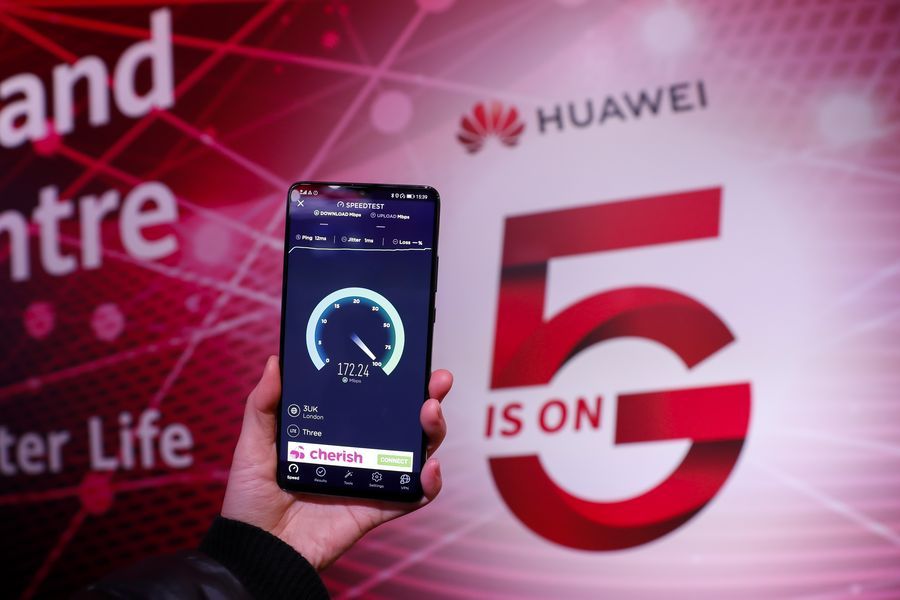
A staff member tests the speed with a Huawei 5G mobile phone on Jan 28, 2020. (Photo: Xinhua)
China has built the world's largest 5G network in terms of the number of users and base stations, but it still lags behind some other countries when it comes to user experience, coverage and commercial closed loop.
Compared with the 270 megabits average 5G downlink rate in China, the Republic of Korea offers over 600 megabits.
Moreover, 5G user penetration in the ROK reached 25 percent in September, compared with roughly 8 percent in China.
User experience in China is also nothing to write home about. Some users get the 5G logo on their mobile phones but the signal keeps dropping and the experience is of 4G; they are not really connected to the 5G network and are unable to make 5G phone calls. Also, there is frequent switching between 4G and 5G leading to poor user experience.
Since the commercialization of 5G, the average revenue per user in the ROK has increased by 37 percent. In the first half of 2020, the three 5G operators there registered double-digit growth. In comparison, China still faces considerable challenges in terms of 5G's commercial returns.
Objectively speaking, China has just finished the first phase of the construction of the 5G network. However, problems abound. The number of 5G users has reached 150 million, but a matching network, mobile phones and quality of service still elude them. Many users have bought 5G phones but there is no 5G coverage, or they have taken a 5G package but their mobile phones are still 4G. Huawei is using big data to connect user data, operational data and terminal data, so that the three can better match.
Then there are operational and maintenance costs. Currently, the peak rate of 5G usage is 25 times that of 4G, but 5G devices greatly increase power consumption at base stations, posing a huge challenge to the whole power supply system. A survey of network power consumption in China indicates that about 32 percent of the stations have insufficient power, and in some places battery capacity is also insufficient.
From the perspective of personal business, operators can achieve commercial closed loop from three aspects. They should first accelerate the release of flow dividends through innovative differential applications. Second, the total costs of operators should be optimized from an overall perspective. Third, the current operating platform should be upgraded as early as possible to end the problems brought about by 5G.


